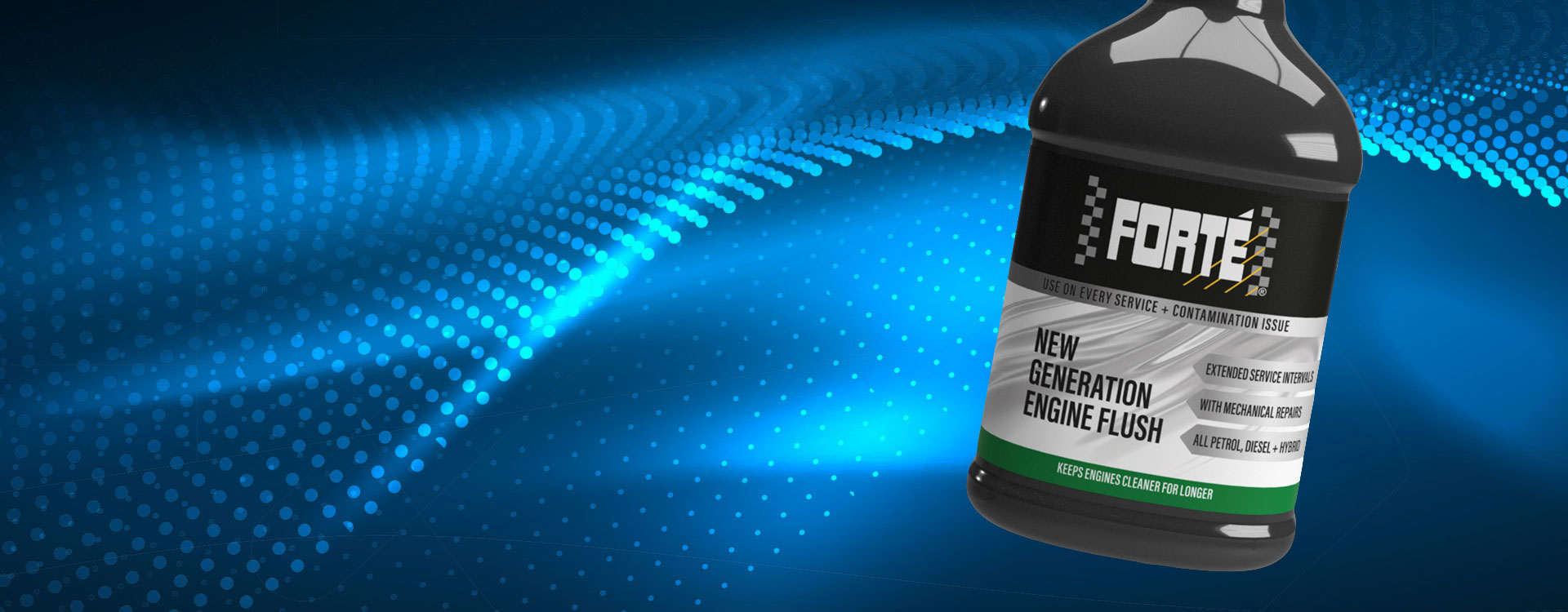Forté technical tips – Timing belt in oil systems (TBIO)

Timing-belt-in-oil (TBIO) or ‘wet belt’ systems – that are fully-encased in the engine – were introduced to meet emissions targets, reduce the weight of components and the engine’s overall size, and make it as efficient as possible.
Already in use by Ford, Volkswagen Group and PSA, TBIO systems are designed to last the life of the vehicle, however, more recently manufacturers have introduced a timing belt change interval to ensure the engine is protected from belt failure.
Aside from helping the manufacturer lower carbon dioxide from their official new car emissions figures, they do not perform in a superior manner. Many car drivers are familiar with wet timing belt issues – particularly because their replacement adds a significant cost to servicing bills.
Nonetheless, running a low oil level, lack of servicing or using the incorrect oil on engines with timing belt in oil systems could have an adverse effect on the lifetime of the ‘wet belt’, making the quality, specification and cleanliness of the engine oil paramount.
Vehicles running low mileage and short start-stop journeys do not expel the moisture and fuel parts from the crankcase as they rarely reach normal operating temperature. As the oil degrades, acidity increases affecting the properties of the belt.
Additionally, using start-stop systems alongside timing belt technology presents its own challenges for the lubrication system, as start-stop events increase by tenfold in a vehicle’s lifespan. Wet timing belts tend not to snap, but their teeth become detached. Even if a severely weakened belt is still serving its purpose, these fibrous remnants can enter the oil pump strainer, causing a loss of oil pressure.
For that reason, check the belt’s replacement interval and conduct a visual inspection at service. The belt should be replaced sooner for a vehicle covering fewer than 10,000 miles per year, with most journeys being shorter than six miles. Moreover, be sure that the correct oil is used during servicing that complies with the manufacturer’s specifications. Different timing belt lubricants may contain chemicals that attack the belt, so always prioritise a manufacturer’s specification.
ADDRESSING THE CHALLENGE
Forté New Generation Engine Flush addresses the challenge of cleaning and protecting engines fitted with TBIO technology and start-stop systems, as well as tackling oil contamination resulting from the increased use of biodiesel and ethanol-based fuels and the fitment of EGR and after-treatment systems.
Formulated with an improved blend of cleansing agents, dispersants and anti-wear agents, the product increases cleaning and moisture emulsification removal throughout the lubrication system. The advent of TBIO systems, alongside technologies such as start-stop and exhaust gas after-treatment, means there has never been a more important time to flush an engine to protect and preserve these critical components.
New Generation Engine Flush removes sludge, varnish and lacquer caused by the effects of biodiesel and ethanol-based fuels, as well as the heightened soot loading of the engine oil through the use of EGR and exhaust after-treatment systems.
Not only this, but it also ensures optimum oil flow to critical moving parts – a vital factor to ensure engines with start-stop systems are adequately protected. The product is compatible with internal drive belt systems. By effectively flushing the oil system, it also stabilises cylinder compression to restore lost engine power.

NEW GENERATION ENGINE FLUSH IS RECOMMENDED FOR:
✓ BIO-FUELS
✓ WET BELT (TBIO)
✓ START/STOP
✓ DPF
✓ TURBO
✓ EGR
✓ SCR / ADBLUE
Find out more at www.forteuk.co.uk
